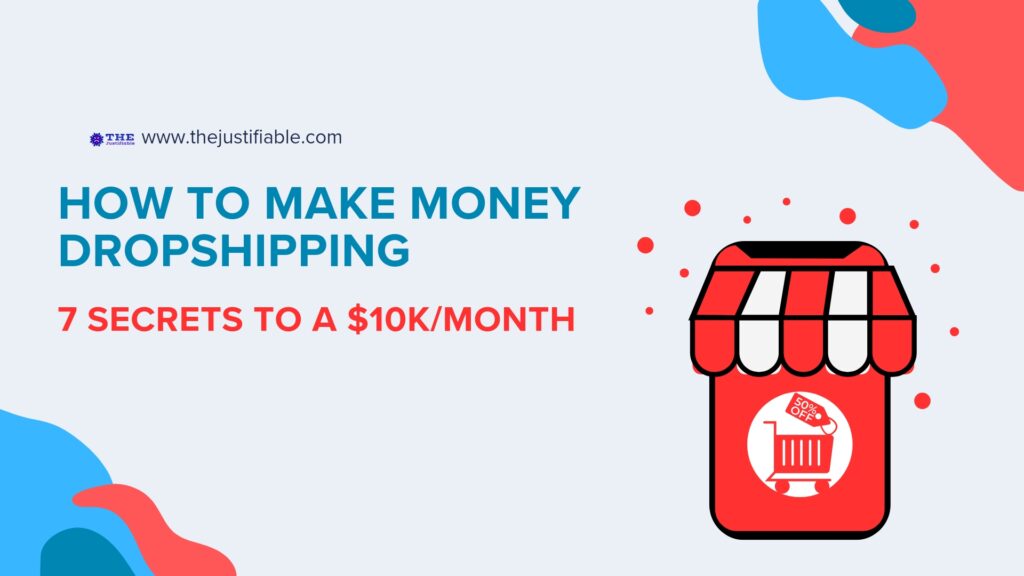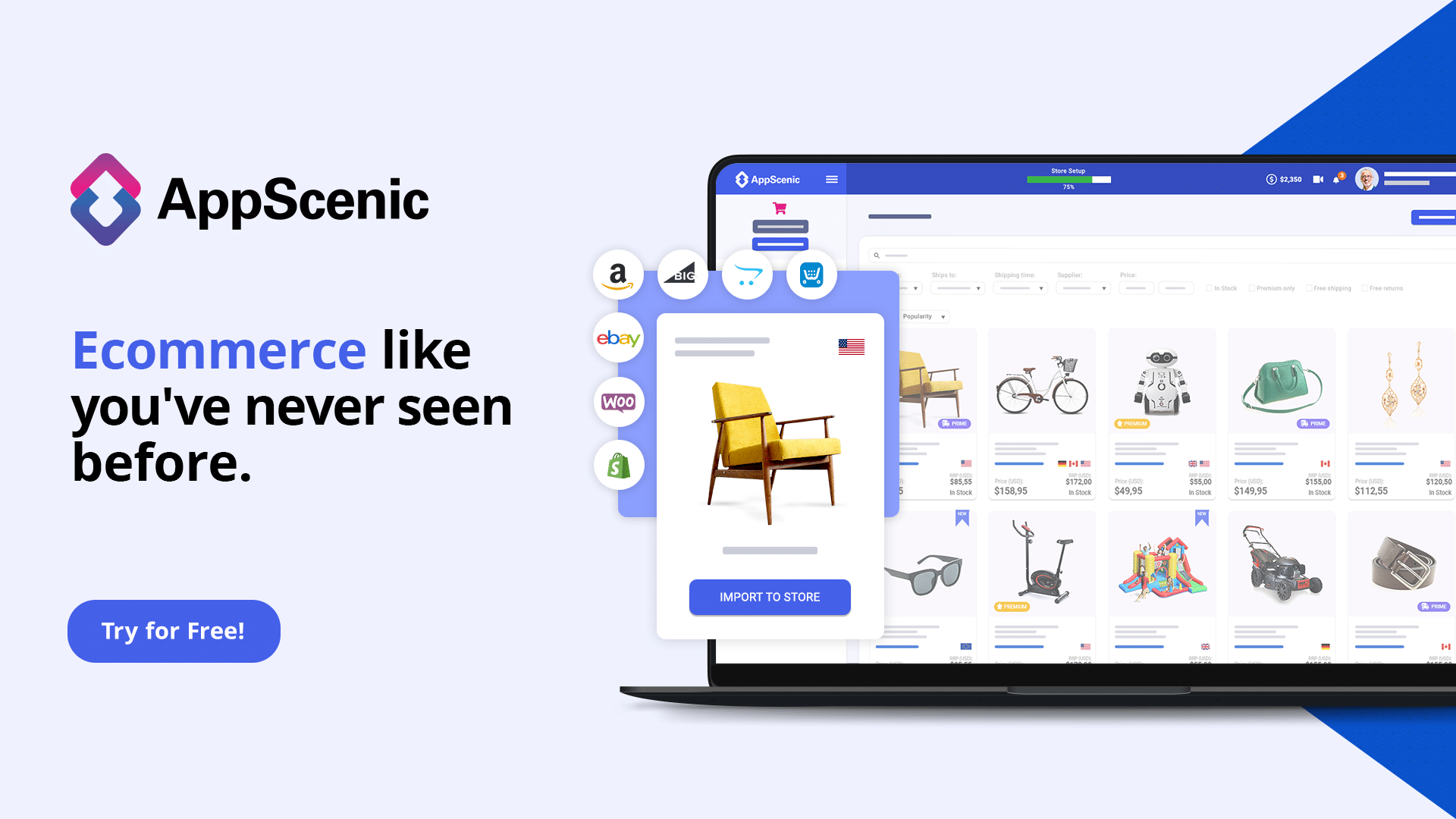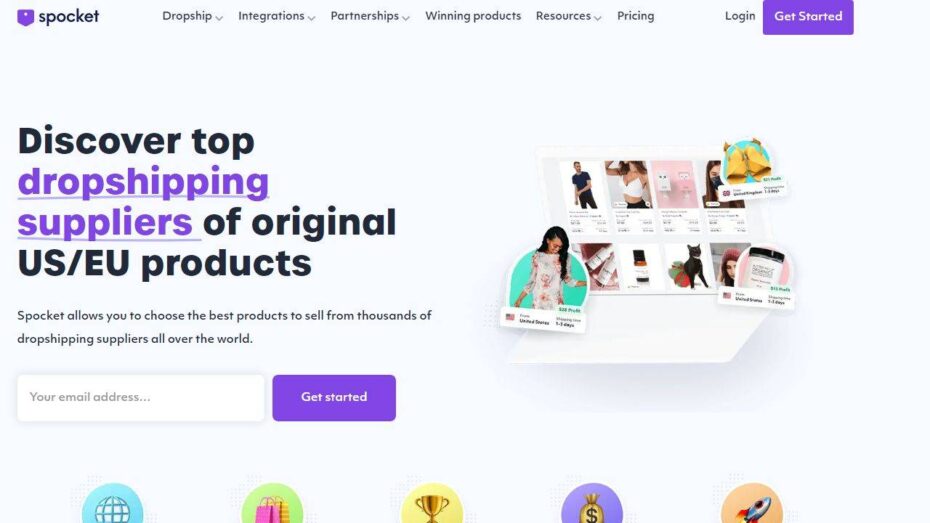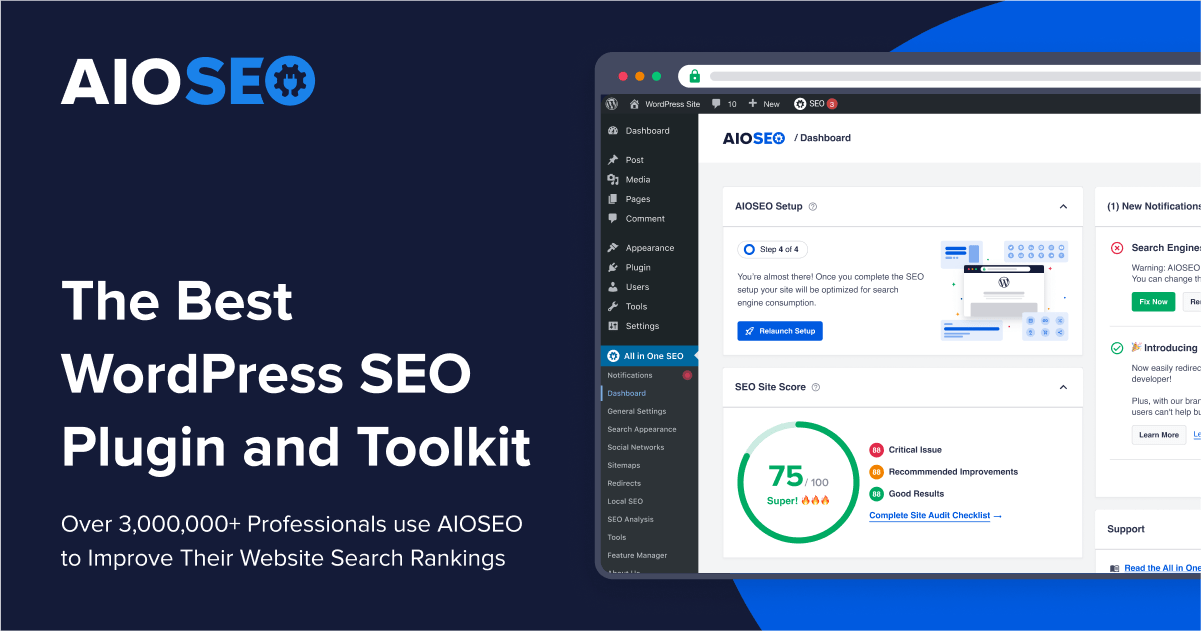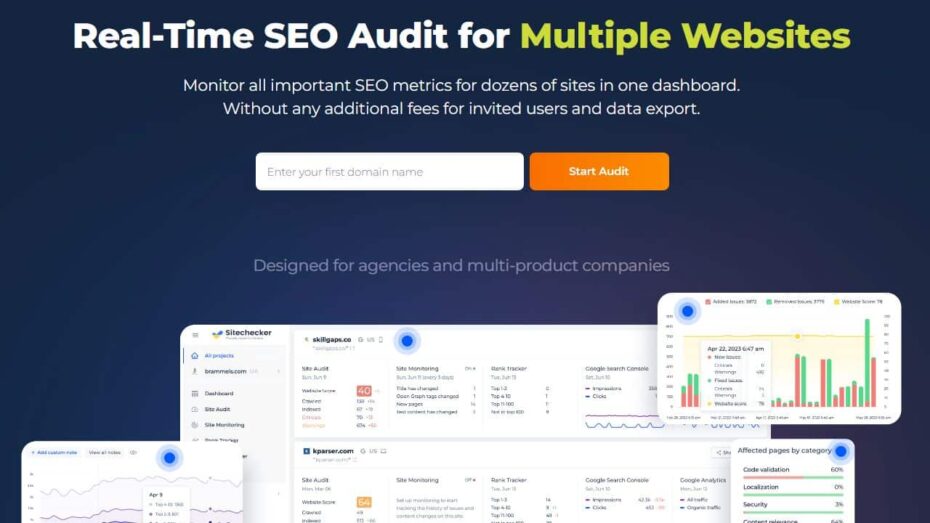Disclosure: This post contains affiliate links, which means that if you click on them and make a purchase, I will receive a commission. Read our Disclaimer for More.
Are you looking for a flexible way to earn income without the hassle of inventory? Have you ever wondered if it’s possible to build a successful online business with minimal startup costs? How can one navigate the complexities of dropshipping to achieve a substantial monthly income? If you ask me, embarking on a dropshipping venture could be your answer. Dropshipping has revolutionized the e-commerce landscape, offering a gateway to financial freedom with the right approach.
In my experience, understanding the nuances of dropshipping is crucial for anyone aiming to make a significant impact in the online marketplace. This method allows you to sell products directly to customers without ever holding stock, relying on suppliers to ship products directly. It means lower overheads and less risk, making it an attractive option for many entrepreneurs. My recommendation for beginners is to start by mastering market research and selecting the right platform, which can significantly influence your success.
From my perspective, the journey to earning $10K a month through dropshipping is not just about selling; it’s about building a brand that resonates with your audience. It involves careful product selection, creating compelling offers, and leveraging marketing strategies that drive traffic and conversions. Most importantly, providing stellar customer service can set you apart in a competitive landscape. In this guide, we will explore the secrets to making money dropshipping, offering you a blueprint to reach your financial goals. Here’s how you can start.
Mastering Market Research: The First Step to $10K/Month
Did you know that 90% of new online businesses fail within the first four months? In my view, the primary reason for this staggering statistic is the lack of thorough market research. Mastering market research is fundamental in learning how to make money dropshipping. It’s not just about identifying what to sell; it’s about understanding who you’re selling to and the market dynamics that will influence your success.
Market research is your compass in the vast ocean of e-commerce. It guides your decisions, from product selection to pricing strategies. In my opinion, the best way to start is by identifying trending products and niches with high demand but low competition. This approach can help you spot opportunities that others might overlook. Additionally, paying attention to customer feedback on social media and review sites can offer invaluable insights into what products are in demand and what improvements can be made.
Furthermore, my recommendation is to always keep an eye on emerging trends. Tools like Google Trends, social media listening platforms, and market research reports can be invaluable. They provide real-time data that can inform your product selection process. Remember, the goal is not just to follow the trend but to anticipate it. By the time a trend is peaking, you should already be positioned to meet the demand, setting you apart from competitors who are slower to react.
Leverage Real-Time Data for Product Selection
Choosing the right products to dropship is more art than science. However, leveraging real-time data can add precision to this art. According to recent studies, data-driven decision-making can increase a business’s productivity and profitability by up to 6%. This is a significant margin in the competitive world of dropshipping. Real-time data allows you to understand current consumer behaviors, preferences, and buying trends, enabling you to make informed decisions about what products to include in your store.
My suggestion for effectively leveraging real-time data involves using tools like Google Analytics, SEMrush, and Ahrefs to track search trends and keyword volumes. These insights can reveal what potential customers are looking for online, helping you to tailor your product offerings accordingly. Furthermore, social media trends can provide a window into the future, showcasing emerging products before they become mainstream.
Moreover, I strongly believe that integrating real-time sales data from your store can help refine your product selection further. Analyzing which products get the most views, clicks, and purchases can guide you in optimizing your inventory to focus on high-performing items. Remember, the aim is to continuously adapt and evolve your product selection to meet market demands efficiently.
Analyze Competitors to Outperform Them
In my experience, analyzing your competitors is as crucial as understanding your customers. A comprehensive competitor analysis can uncover gaps in the market, highlight areas for improvement, and inspire innovative strategies to differentiate your brand. In the dropshipping industry, where many stores might sell similar products, finding your unique selling proposition (USP) is essential for standing out.
From my perspective, start by identifying your direct competitors and analyze their product range, pricing strategies, marketing efforts, and customer service approach. Tools like SimilarWeb and SpyFu can provide insights into their traffic sources, keywords, and ad strategies. This information can help you identify what works well in your niche and where there might be opportunities to capitalize on competitors’ weaknesses.
Additionally, I recommend paying close attention to customer reviews on your competitors’ sites. These can offer valuable insights into what customers appreciate and what pain points they experience. By addressing these pain points in your own offering, you can create a competitive edge. Remember, the goal is not to copy what your competitors are doing but to understand the market better and find innovative ways to exceed customer expectations.
Selecting the Perfect Platform: Appscenic and Spocket Insights
“Choosing the right platform is the first real step to establishing a successful online business.” This quote perfectly encapsulates the critical role that selecting the appropriate dropshipping platform plays in learning how to make money dropshipping. In the sea of e-commerce platforms, Appscenic and Spocket have emerged as leading contenders for entrepreneurs looking to carve out their niche in the dropshipping world. Each offers unique features and benefits tailored to different business needs, and understanding these can be the key to unlocking your dropshipping potential.
Appscenic and Spocket are renowned for their user-friendly interfaces, extensive product selections, and reliable supplier networks, but what sets them apart is their specific focus on enhancing the dropshipping experience. In my opinion, the choice between the two should be influenced by your business model, target market, and product types you wish to sell. While Appscenic excels in automation and real-time analytics, Spocket is celebrated for its high-quality, locally-sourced products and faster shipping times. Knowing your priorities can help steer you toward the platform that aligns best with your business goals.
Most importantly, when considering which platform to choose, I recommend diving deep into the features each offers, such as integration capabilities with your existing website, the quality of customer support, and the ease of product import and order fulfillment processes. Reviews from current users can provide invaluable insights into the platforms’ performance and reliability. Remember, the goal is to find a platform that not only simplifies the operational aspects of your business but also supports your growth objectives. From my perspective, the perfect platform is one that complements your workflow, enhances your efficiency, and offers scalability as your business expands.
Why Appscenic Could Be Your Gateway to Success
“Success is where preparation and opportunity meet.” Appscenic embodies this sentiment by offering dropshippers a comprehensive toolkit designed to streamline the operational challenges of running an e-commerce business. In my view, Appscenic’s standout feature is its automation capabilities, which can significantly reduce the time spent on order processing, inventory management, and tracking shipments. This efficiency is paramount for entrepreneurs looking to scale their operations without sacrificing quality or customer satisfaction.
Moreover, Appscenic’s real-time analytics and market insights provide a strategic advantage by enabling informed decision-making. From my experience, having access to data-driven insights about product performance, customer behavior, and market trends is invaluable. It allows you to adapt your strategies quickly, optimize your product listings, and tailor your marketing efforts to meet consumer demands effectively. In essence, Appscenic equips you with the intelligence to stay ahead of the curve.
Finally, I strongly believe that Appscenic’s vast network of vetted suppliers is a game-changer for dropshippers. This network not only ensures access to high-quality products but also fosters reliability and trust between dropshippers and suppliers. My recommendation for those looking to diversify their product offerings and enhance their brand reputation is to consider Appscenic. By leveraging its comprehensive features, you can navigate the complexities of dropshipping with greater ease and confidence, positioning your business for success.
Spocket: Unlock a World of Premium Products
“The best businesses are built on great products.” Spocket takes this principle to heart by offering dropshippers access to a curated selection of premium products from reliable suppliers around the world. What sets Spocket apart, in my opinion, is its emphasis on high-quality, locally-sourced items that appeal to consumers seeking unique products not readily available on other platforms. This focus can significantly elevate your brand and differentiate your offerings in a crowded marketplace.
In addition to its product quality, Spocket’s integration with major e-commerce platforms like Shopify and WooCommerce makes it a seamless fit for many entrepreneurs. From my perspective, this ease of integration is crucial for maintaining a streamlined operation, allowing you to focus more on sales and less on technical issues. Moreover, Spocket’s user-friendly interface and efficient order processing system enhance the overall user experience, both for you and your customers.
Most importantly, Spocket’s faster shipping times are a critical factor in customer satisfaction and retention. In my experience, today’s consumers expect quick delivery, and Spocket’s ability to meet these expectations can be a significant competitive advantage. My suggestion for businesses targeting markets in the United States and Europe is to consider Spocket. By offering quality products with faster shipping, you can improve customer experience, encourage repeat business, and ultimately, drive greater profitability.
Building a Winning Product Portfolio
When comparing the success rates of dropshipping businesses, a common denominator among the most successful ventures is their well-curated product portfolio. Just as a chef carefully selects ingredients for a signature dish, learning how to make money dropshipping requires meticulous selection and management of your product offerings. A winning product portfolio not only meets the market demand but also aligns with your brand identity, ensuring a cohesive and appealing selection for your target audience.
Curating a diverse yet focused product range is essential. From my point of view, it’s not just about adding more products; it’s about adding the right products. This involves analyzing market trends, understanding customer preferences, and identifying products that complement each other. For instance, if you’re targeting eco-conscious consumers, your portfolio should consistently reflect sustainable and environmentally friendly products. This coherence enhances your brand’s credibility and appeal, making it easier for customers to make purchasing decisions.
Moreover, managing your product portfolio requires regular review and adjustment. In my experience, staying agile and responsive to market changes can significantly impact your success. This might mean phasing out underperforming products, introducing new items based on customer feedback, or capitalizing on emerging trends. My recommendation is to use data-driven insights to inform these decisions, leveraging sales data, customer reviews, and market research to continuously refine your product selection. A dynamic approach to your portfolio can help you maintain relevance and competitiveness in the fast-paced e-commerce landscape.
Curate Products with High Demand and Low Competition
Finding products that are in high demand yet face low competition is akin to discovering a gold mine in the dropshipping world. This sweet spot means you can cater to a strong market need without battling too many rivals for the same customers. From my perspective, achieving this balance requires thorough market research and a keen understanding of niche markets. Tools like Google Trends, keyword research tools, and social media analytics can provide valuable insights into what consumers are looking for and which product niches might be underserved.
One effective strategy, in my opinion, is to focus on niche-specific products that appeal to a particular hobby, lifestyle, or interest group. These niches often have dedicated but underserved audiences looking for products that resonate with their specific needs or values. For example, eco-friendly home products for sustainable living enthusiasts or specialized sports equipment for adventure sports aficionados. By catering to these niche markets, you can build a loyal customer base with less competition.
Additionally, I would say that leveraging social media platforms to identify trends and gauge consumer interest in various niches can be incredibly effective. Engaging directly with potential customers through polls, surveys, or discussions can provide firsthand insight into their needs and preferences. My suggestion is to always be on the lookout for emerging trends and underserved niches. This proactive approach can help you identify high-demand, low-competition products that can set your dropshipping business apart.
The Secret to Setting Prices for Maximum Profit
Setting the right prices for your products is both an art and a science, requiring a delicate balance between competitiveness and profitability. In my experience, the key to successful pricing is understanding your market position, costs, and customer value perception. A well-priced product not only attracts buyers but also ensures a healthy profit margin. It’s important to conduct competitor analysis to gauge the pricing landscape. However, merely matching or undercutting competitors’ prices is not always the best strategy. Instead, focus on adding value through your product offerings or customer service, which can justify higher price points.
Moreover, I recommend adopting a dynamic pricing strategy. This involves adjusting your prices based on various factors such as market demand, competitor prices, and stock levels. Tools and software that track these variables in real-time can automate the process, helping you stay competitive without constantly monitoring the market. Implementing psychological pricing techniques, such as pricing products just below a round number (e.g., $29.99 instead of $30), can also subtly influence purchase decisions, enhancing the perceived value for money.
Most importantly, never underestimate the value of transparent pricing. Customers appreciate knowing what they are paying for, including shipping costs or any additional fees. My suggestion is to always be upfront about the total cost of purchasing a product from your store. This transparency builds trust and can reduce cart abandonment rates. Remember, effective pricing is not just about covering costs and turning a profit; it’s about understanding and meeting your customers’ expectations, which in turn, drives long-term success for your dropshipping business.
Crafting Irresistible Offers That Convert
While it’s true that the quality of your products is crucial for success in the dropshipping business, equally important is your ability to craft offers that resonate with your audience. In the realm of online shopping, where competition is just a click away, creating compelling offers is essential for converting browsers into buyers. How to make money dropshipping is not just about selling; it’s about presenting your products in a way that makes them irresistible to your target market.
Firstly, understanding your customer’s needs and pain points is key. From my perspective, offers should be designed with the customer in mind, providing solutions to their problems or enhancing their lifestyle in some way. This could mean offering products that complement each other, creating bundles that offer better value, or providing exclusive access to products or services. Tailoring your offers to match customer interests not only increases the perceived value but also strengthens the relationship between your brand and your customers.
Moreover, clarity and simplicity go a long way in making an offer attractive. My suggestion is to ensure that your offers are easy to understand and the benefits are clearly communicated. Complicated offers with too many conditions or requirements can be off-putting. A straightforward and honest presentation of what customers will gain from taking up your offer can significantly enhance its appeal. Remember, the goal is to make the decision to purchase as easy as possible for the customer.
Bundle Deals and Discounts: Your Toolkit for Higher Sales
Bundle deals and discounts have long been powerful tools in the marketer’s toolkit, and for a good reason. They can significantly influence customer behavior, encouraging them to purchase more than they originally intended. From my point of view, bundling products together not only offers customers better value but also increases the average order value, contributing to higher overall sales. It’s a win-win situation where customers feel they are getting a good deal, and you increase your revenue.
My recommendation for creating effective bundle deals is to combine products that complement each other or are often purchased together. This not only makes the deal more attractive but also enhances the customer’s shopping experience by simplifying the decision-making process. For example, bundling a camera with a memory card and a case provides a complete solution for the buyer, making the purchase decision easier and more appealing.
Furthermore, offering discounts on these bundles can further incentivize purchases. However, it’s important to strike a balance. In my estimation, discounts should be attractive enough to motivate buyers but not so deep that they erode your profit margins. Time-limited offers can create a sense of urgency, encouraging customers to act quickly. Remember, the key is to understand your costs and customer behavior to design bundle deals and discounts that are mutually beneficial.
The Psychology of Pricing: Boost Your Average Order Value
The way products are priced can have a profound effect on consumer behavior. Psychological pricing strategies, such as charm pricing (ending prices with .99 or .95), can subtly influence customers’ perception of value, making prices seem lower than they are. From my perspective, these tactics tap into the customer’s emotional response to pricing, affecting their purchasing decisions on a subconscious level.
Another strategy I strongly believe in is the use of anchor pricing. By showing the original price alongside the discounted price, you set a reference point (the anchor), making the discounted price seem like a much better deal. This contrast enhances the attractiveness of the offer and can encourage customers to make a purchase decision more quickly.
Most importantly, tiered pricing can be an effective way to boost your average order value. Offering products in different tiers (basic, premium, deluxe) caters to a broader range of customer needs and budgets. In my experience, customers often opt for mid-tier options, perceiving them as offering the best value. This strategy not only increases sales but also allows customers to choose the product that best fits their needs, improving overall satisfaction. Remember, the goal of pricing psychology is to make your offers more appealing and drive sales without compromising the perceived value of your products.
Amplify Your Reach: Cutting-Edge Marketing Strategies
It may come as a surprise to many that the difference between a thriving online business and one that barely makes ends meet often lies not in the quality of the products but in the effectiveness of the marketing strategies employed. In the context of how to make money dropshipping, leveraging cutting-edge marketing strategies can significantly amplify your reach and connect you with audiences far beyond your initial scope. The digital age offers an unprecedented array of tools and platforms designed to target and engage potential customers wherever they may be.
In my opinion, the first step to crafting effective marketing strategies is understanding where your target audience spends their time online. This requires diving deep into customer demographics, interests, and online behavior patterns. Tailoring your marketing efforts to fit the platforms your audience prefers ensures that your message is not just seen but engaged with. For instance, visually driven products do exceptionally well on platforms like Instagram and Pinterest, while B2B offerings might find more success on LinkedIn.
Moreover, I would say that the key to cutting-edge marketing lies in creativity and personalization. Customers today are bombarded with advertisements from all directions, making it crucial for your message to stand out. Utilizing tools that allow for personalized marketing messages can significantly increase engagement rates. For example, email marketing campaigns that address recipients by name and recommend products based on past purchasing behavior can create a sense of personal touch that elevates your brand in the minds of consumers.
Leverage Social Media for Explosive Growth
Social media is not just a platform for socializing; it’s a powerful business tool that, if leveraged correctly, can lead to explosive growth for your dropshipping business. It’s astounding how effectively social media can be used to create brand awareness, foster community, and drive sales. Platforms like Instagram, Facebook, and TikTok offer direct access to billions of potential customers worldwide, each with the potential to become a loyal fan of your brand.
My suggestion for leveraging social media effectively involves creating content that resonates with your audience. This could range from engaging product demonstrations to customer testimonials and behind-the-scenes glimpses of your brand. The goal is to not just promote your products but to tell a story that connects with your audience on an emotional level. Engagement is key; encouraging comments, shares, and likes can significantly increase your visibility and attract new customers.
Additionally, social media advertising offers the ability to precisely target your ads based on a myriad of factors such as age, interests, behaviors, and location. In my experience, this level of targeting ensures that your marketing budget is spent efficiently, reaching those most likely to be interested in your products. Remember, the power of social media lies in its ability to engage and connect. By fostering genuine connections with your audience, you can turn casual browsers into loyal customers.
SEO Mastery: Drive Free, High-Intent Traffic
Search Engine Optimization (SEO) is often underestimated in its potential to drive free, high-intent traffic to your dropshipping store. Unlike other marketing strategies that require ongoing financial investment, SEO offers a sustainable way to attract customers actively searching for products like yours. The beauty of SEO is that it connects you with users who are already interested in what you have to offer, making them more likely to convert into paying customers.
My recommendation for mastering SEO begins with keyword research. Identifying the keywords and phrases your potential customers are using to search for products can guide your content creation, making your site more relevant and easily discoverable. Implementing these keywords naturally within high-quality, valuable content not only appeals to search engines but also to your readers, enhancing their user experience.
Furthermore, I cannot stress enough the importance of optimizing your website’s technical aspects, such as mobile-friendliness, site speed, and easy navigation. From my perspective, these factors play a significant role in not just SEO rankings but in reducing bounce rates and improving overall user satisfaction. Remember, the goal of SEO is not just to drive traffic, but to attract visitors who are genuinely interested in what you have to offer. Through strategic SEO practices, you can build a steady stream of high-intent traffic that boosts your sales and grows your business organically.
Stellar Customer Service: Your Secret Weapon
Just as the foundation of a house is crucial for its stability, stellar customer service is the bedrock upon which successful dropshipping businesses are built. In a market where products can be similar across various platforms, the quality of customer service can be the deciding factor that sets your business apart. In the realm of how to make money dropshipping, excellent customer service not only retains customers but also turns them into vocal advocates for your brand.
Providing top-notch customer service starts with understanding and anticipating the needs of your customers. I believe that actively listening to your customers, addressing their concerns promptly, and going above and beyond to meet their expectations are key practices that foster trust and loyalty. This involves everything from clear and honest communication about products and shipping times to hassle-free returns and exchanges. By prioritizing customer satisfaction, you create a positive shopping experience that encourages repeat business.
Moreover, in my view, leveraging customer feedback is invaluable for continuous improvement. Encouraging customers to share their experiences and suggestions provides insights into what you’re doing right and where you can improve. This feedback loop can guide your efforts in refining your product offerings, optimizing your website, and improving your service levels. Most importantly, acting on customer feedback demonstrates that you value their input, which can strengthen their emotional connection to your brand.
Automate for Efficiency, Personalize for Impact
In today’s digital age, automation and personalization are key components of stellar customer service. Automation tools can streamline repetitive tasks such as order confirmations, shipping notifications, and customer inquiries, ensuring that your customers receive timely and consistent communication. This efficiency is crucial for maintaining a high level of service as your business scales.
However, it’s important to balance automation with personalization. In my experience, customers appreciate when businesses recognize them as individuals. This can be as simple as addressing customers by name in communications or as sophisticated as offering personalized product recommendations based on their browsing and purchase history. Personalization enhances the customer experience, making them feel valued and understood.
I recommend integrating customer service software that allows for both automation and personalization. Tools that provide a unified view of customer interactions across all channels enable you to deliver a seamless and customized service experience. By automating routine tasks, your team can focus on more complex issues that require a human touch, ensuring that every customer interaction is meaningful and effective.
Turning Customers into Brand Ambassadors
The ultimate testament to stellar customer service is when your customers become brand ambassadors, voluntarily advocating for your business. This level of customer engagement is invaluable, as word-of-mouth recommendations are often more trusted and influential than traditional marketing efforts. From my perspective, creating an exceptional service experience that customers want to share with others starts with genuine interactions and exceeding expectations.
Encouraging customers to share their positive experiences on social media, review platforms, and with friends and family can exponentially increase your brand’s reach. I suggest implementing a referral program that rewards both the referrer and the referee. This not only incentivizes customers to share their positive experiences but also introduces new customers to your brand in a trusted and cost-effective way.
Furthermore, recognizing and appreciating your most vocal supporters can strengthen their loyalty and encourage continued advocacy. This could be through exclusive offers, early access to new products, or public acknowledgment on your platforms. Remember, customers who feel valued and appreciated are more likely to continue supporting and promoting your brand. In my experience, turning customers into brand ambassadors is one of the most powerful marketing strategies available, fueled by stellar customer service and genuine customer relationships.
Scaling Smart: Strategies to Go from $1K to $10K
It’s a fascinating fact that only about 20% of new businesses manage to scale successfully beyond their initial revenue benchmarks. This statistic underscores the challenge of scaling a business, especially in the competitive landscape of dropshipping. Learning how to make money dropshipping and transitioning from earning $1K to $10K a month requires strategic planning, optimization, and smart scaling techniques. Scaling is not just about increasing your sales volume; it’s about enhancing your operational efficiency, expanding your market reach, and maximizing profitability with calculated moves.
The first step in scaling smart is to analyze your current operations and identify areas for improvement. This could involve optimizing your website for better conversion rates, streamlining your order fulfillment process, or enhancing your marketing strategies to reach a wider audience. In my opinion, focusing on customer retention is equally important. Returning customers are more likely to make a purchase compared to new ones, so implementing loyalty programs or personalized marketing strategies can significantly boost your revenue without a proportionate increase in customer acquisition costs.
Furthermore, it’s crucial to reinvest profits back into your business wisely. This might mean upgrading your technology, investing in professional marketing services, or expanding your product line to meet broader customer needs. My suggestion for small business owners is to prioritize investments that offer long-term benefits. For example, improving your website’s user experience can have a lasting impact on conversion rates and customer satisfaction. Scaling smart requires a balance between short-term gains and long-term growth potential, ensuring your business is not just growing, but thriving.
When and How to Expand Your Product Line
Expanding your product line is a pivotal strategy for scaling your dropshipping business, but knowing when and how to do this is key to ensuring your expansion contributes to rather than hampers your growth. A good indicator that it’s time to expand your product line is when you notice consistent sales and a strong demand for your current offerings, coupled with frequent customer inquiries about products not currently in your catalog. This signals not only a market opportunity but also customer trust in your brand to fulfill their needs.
The process of expanding your product line should be approached with careful consideration. My recommendation is to conduct thorough market research to identify trending products or gaps within your niche that align with your brand. Moreover, it’s important to assess the potential impact of new products on your existing operations. Adding too many products too quickly can strain your resources, so I suggest starting small and gradually increasing your range based on customer feedback and sales performance.
In my view, collaboration with your suppliers is also crucial during this expansion phase. Ensuring they can meet the increased demand and maintain the quality of your products is essential. Additionally, consider leveraging data analytics to predict which new products will resonate most with your audience. By expanding your product line strategically, you can meet the evolving needs of your customers while driving significant revenue growth.
Outsourcing and Automation: The Path to Passive Income
Outsourcing and automation are the cornerstones of transforming a dropshipping business into a source of passive income. As you scale your operations, the complexity and volume of tasks will inevitably increase. At this juncture, clinging to the notion of managing everything personally can become a bottleneck to growth. According to industry experts, businesses that embrace outsourcing and automation report up to 30% higher productivity rates. This frees up the business owner’s time to focus on strategic growth activities rather than getting bogged down in day-to-day operations.
Outsourcing tasks such as customer service, content creation, and even certain aspects of your marketing strategy can significantly enhance your business’s efficiency and quality. In my opinion, the key is to choose outsourcing partners who understand your brand and can maintain the high standards you’ve set for your business. Furthermore, investing in automation tools for inventory management, order processing, and marketing can streamline your operations and reduce the risk of human error.
Most importantly, my recommendation is to adopt a mindset of continuous improvement. The landscape of e-commerce is constantly evolving, and so should your strategies for outsourcing and automation. Regularly evaluating the effectiveness of your tools and partners ensures that your business remains competitive and on the path to achieving passive income. Embracing these strategies not only facilitates scaling but also enhances your quality of life by freeing up time for personal pursuits or exploring new business opportunities.
Your Roadmap to Making Money Dropshipping
Embarking on the journey of making money through dropshipping is akin to setting off on an exciting adventure where the right roadmap can lead to treasures untold. This pathway is fraught with challenges, but with strategic planning, perseverance, and a keen understanding of the e-commerce landscape, the rewards can be substantial. The essence of dropshipping lies in selling products to customers without holding inventory, relying instead on suppliers to ship products directly to buyers. This model significantly reduces upfront costs and risks, making it an attractive option for entrepreneurs eager to tap into the online retail space.
The first landmark on your roadmap should be a thorough market research phase. Understanding what products are in demand, identifying your target audience, and analyzing the competition are crucial steps. In my opinion, the success of a dropshipping business hinges on selecting the right niche—one that you are passionate about and that has a healthy demand. Tools like Google Trends and social media can offer invaluable insights into current consumer interests, helping you to carve out a niche that’s both profitable and sustainable.
Following market research, the next step is to choose a reliable e-commerce platform and trustworthy suppliers. Platforms like Shopify, WooCommerce, and BigCommerce offer user-friendly interfaces and integration with numerous dropshipping suppliers. My recommendation is to vet suppliers carefully, considering factors such as product quality, shipping times, and reliability. Building strong relationships with your suppliers can be a game-changer, ensuring that your customers receive quality products in a timely manner. Remember, your reputation as a dropshipping business rests on the satisfaction of your customers.
Finally, the crux of making money dropshipping lies in your marketing strategy. In a digital world where attention is the new currency, crafting compelling marketing messages and leveraging platforms where your target audience congregates are paramount. Utilizing social media marketing, email marketing, and SEO can drive significant traffic to your store. I strongly believe in the power of creating high-quality content that resonates with your audience, establishing your brand as a trusted authority in your niche. Additionally, continuously optimizing your website for conversions, including clear calls-to-action and an easy checkout process, can significantly increase your sales.

